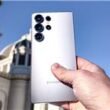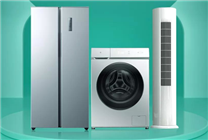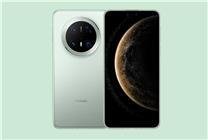New National Standards for Smart Home Appliances: What You Need to Know
Summary:
- The State Administration for Market Regulation has approved new standards for smart home appliances, effective May 1, 2026.
- These standards define essential technical requirements focusing on "intelligent capabilities" and "scenario effects."
- A five-level intelligence rating system will help consumers easily assess product capabilities.
On November 17, it was revealed that the State Administration for Market Regulation has approved crucial national standards for smart home appliances. The standards, titled "Intelligent Technical Requirements and Evaluation of Smart Home Appliances Part 1: General Requirements" and "Smart Home Appliances Application Scenarios Part 1: General Requirements," are set to be officially implemented starting May 1, 2026.
Comprehensive Definitions and Benefits
These newly established standards offer a clear definition of technical requirements for smart home appliances, focusing on two pivotal aspects: "intelligent capabilities" and "scenario effects." Not only do these standards guide enterprise research, development, and production, but they also empower consumers to make informed purchasing decisions, ensuring a seamless and secure user experience.
Key Features of the National Standard
The standard concerning intelligent technical requirements mandates that smart home appliances possess several critical functionalities including:
- Data Management: Smart appliances should effectively manage and utilize data for enhanced user experience.
- Human-Computer Interaction: The interaction experience must be intuitive and user-friendly.
- Intelligent Control: Appliances are required to demonstrate autonomous functionalities.
- Operation and Maintenance: Smart devices should facilitate efficient self-maintenance processes.
To aid consumers in evaluating products, a five-level intelligence rating system (ranging from L1 to L5) will be applied, allowing for quick visual assessments of a product’s intelligence level.
Moreover, manufacturers are obligated to provide clear labels detailing the specific functions of smart technologies, the methods for network access, and warnings pertaining to information security risks. This transparency in communication is intended to enhance consumer convenience and confidence.
Application Scenarios
The standard that addresses application scenarios delineates the implementation methods and technical requirements for nine categories of smart home appliances, including but not limited to:
- Environmental Management
- Health Management
- Energy Resource Management
This framework is designed to clarify product development and facilitate ecological interconnectivity among devices.
For instance, under the environmental management scenario, specific parameters are set to ensure effective functioning. These include:
- Temperature Fluctuation: Must not exceed ±2°C.
- Air Quality Measurement: Clean air volume of particulate matter should meet or exceed 90% of nominal values.
- Noise Levels: Strict limits on noise within bedroom and living room areas.
- Light Adjustment Accuracy: Should be no less than 80%.
These measurable criteria ensure that consumers can effectively gauge the performance of intelligent interconnectivity in their home environments.
The Way Forward
As we approach the implementation date, it becomes imperative for both manufacturers and consumers to understand these standards. For manufacturers, adherence will ensure that they remain competitive within the rapidly evolving smart appliance market. For consumers, these standards represent a significant leap forward in making informed choices about smart technologies that impact daily life.
In summary, the upcoming national standards for smart home appliances not only set a benchmark for technological capabilities but also enhance transparency and safety for consumers. By establishing clear guidelines and ratings, these standards aim to foster an ecosystem of smart home devices that are not only intelligent but also reliable and user-friendly.
Stay tuned for more updates as we continue to explore how these standards will change the landscape of smart home technology and enhance our living experiences.








